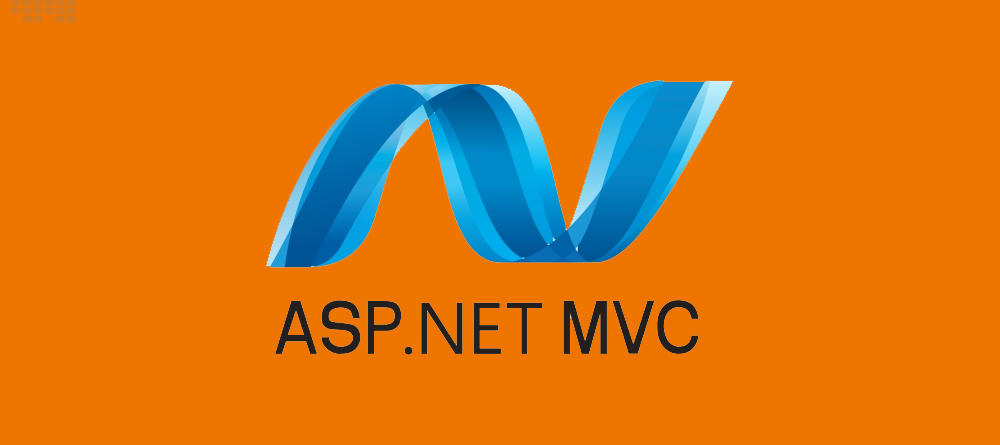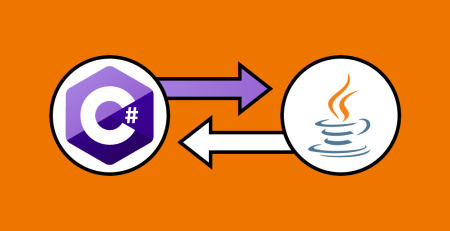What Are The Benefits Of Using The Amazing Model-View-Controller (MVC) Framework In ASP.NET Development?
Table of Contents
Introduction
The Model-View-Controller (MVC) framework stands as a cornerstone in ASP.NET development, offering a structured and efficient paradigm for building web applications. Its primary advantage lies in the clear Separation of Concerns, dividing the application into three distinct components: the Model for managing data and business logic, the View for handling the user interface, and the Controller for managing user input and coordinating interactions.
This architectural pattern enhances code organization, facilitating easier maintenance and scalability. MVC’s modularity promotes Code Reusability and Testability, enabling developers to build robust and reliable applications with independent testing of each component. With support for Parallel Development, flexibility, and clean URL routing, MVC provides a versatile and extensible foundation that empowers developers to create scalable, maintainable, and responsive web applications within the ASP.NET ecosystem.
Separation of Concerns (SoC) in ASP.NET
ASP.NET MVC is built upon SoC principle which states that a software should be divided into separate and self-contained components dealing with different concerns. These are what is referred to as the Model, View, and Controller aspects of MVC. Here’s an explanation of SoC in ASP.NET MVC along with C# code examples:
Model (Data and Business Logic):
In the Model, data and business logic are managed. This includes database interactions, data validation, and any computations required by the application. Here’s a simple C# code snippet representing a basic model for a hypothetical entity:
public class Product
{
public int ProductId { get; set; }
public string Name { get; set; }
public decimal Price { get; set; }
// Additional business logic can be added here
}View (User Interface):
The View is in charge of giving the user access to the data. Data manipulation or business logic shouldn’t be included. It ought to be more concerned with presenting information. Here is a simple ASP.NET MVC Razor view example:
@model YourNamespace.Product
<div>
<h2>@Model.Name</h2>
<p>Price: @Model.Price</p>
</div>Controller (User Input and Interaction):
The Controller handles user input, processes requests, and interacts with the Model to update the data. It then selects the appropriate View to render the response. Here’s a simplified controller example:
public class ProductController : Controller
{
private ProductService productService;
public ProductController()
{
this.productService = new ProductService(); // Assuming ProductService handles business logic
}
public ActionResult Details(int id)
{
Product product = productService.GetProductById(id);
return View(product);
}
}The Details action in this example gets a Product from the ProductService (which could communicate with a database) and sends it to the appropriate view.
In ASP.NET MVC, the SoC concept ensures that every component—Model, View, and Controller—has a distinct and autonomous purpose. Because changes to one component are less likely to influence others, this separation improves the testability, scalability, and maintainability of the code. Additionally, this structure encourages a more modular and well-organized codebase, which facilitates developer collaboration and allows for simpler management of various application components.
Code Reusability
The fundamental concept in programming is that a developer should be at liberty to recycle his/her code in other sections of the application or another application altogether. ASP.NET MVC provides many options to achieve code reusability. Here are some examples in C#:
Controller Base Classes:
You can create a base controller class that contains common functionality shared across multiple controllers. Subsequent controllers can then inherit from this base class to inherit its behavior.
public class BaseController : Controller
{
protected ILogger logger;
public BaseController()
{
this.logger = new Logger(); // Assume Logger is a common functionality
}
}
public class ProductController : BaseController
{
public ActionResult Index()
{
logger.Log("Accessed Product Index");
// Controller logic
return View();
}
}Helper Classes:
Creating helper classes or utility classes with reusable methods can significantly enhance code reusability. For instance, you might have a helper class for common string manipulation functions.
public static class StringHelper
{
public static string Truncate(string input, int length)
{
return input.Length <= length ? input : input.Substring(0, length);
}
}Then, you can use this helper class in various parts of your application:
string truncatedString = StringHelper.Truncate("Lorem ipsum dolor sit amet", 10);Partial Views:
ASP.NET MVC allows you to create partial views that can be reused in different views. These are especially useful for components that appear on multiple pages.
<!-- Shared/_UserInfo.cshtml -->
<div>
<p>Welcome, @User.Identity.Name!</p>
</div>You can then include this partial view in different views:
<!-- Views/Home/Index.cshtml -->
@Html.Partial("Shared/_UserInfo")Custom HTML Helpers:
You can create custom HTML helpers to encapsulate reusable HTML generation logic.
public static class CustomHtmlHelpers
{
public static MvcHtmlString CustomButton(string text, string cssClass)
{
// HTML generation logic
return new MvcHtmlString($"<button class='{cssClass}'>{text}</button>");
}
}In a view, you can then use this custom HTML helper:
@CustomHtmlHelpers.CustomButton("Click me", "btn-primary")By employing these techniques, you can enhance code reusability in ASP.NET MVC, resulting in a more maintainable and efficient codebase. These practices also contribute to a modular and organized architecture, making it easier to extend and evolve your application over time.
Testability
Software testability which refers to how easy it is to assess the correctness, and reliability of some code cannot be ignored in any modern software program. Testability is about designing components in ASP.NET MVC such that it becomes possible to conduct efficient testing. Here are some practices and C# code examples that demonstrate testability in ASP.NET MVC:
Dependency Injection:
Use dependency injection to inject dependencies into your controllers. This makes it easier to replace real dependencies with mock objects during testing. For example:
public class ProductController : Controller
{
private IProductService productService;
public ProductController(IProductService productService)
{
this.productService = productService;
}
public ActionResult Index()
{
var products = productService.GetProducts();
return View(products);
}
}In this example, IProductService is an interface representing the product service, and dependency injection is used to provide a concrete implementation during runtime and mock implementation during testing.
Unit Testing Controllers:
Write unit tests for controllers to ensure that they behave as expected. Using a testing framework like MSTest, NUnit, or xUnit, you can create tests for various controller actions.
[TestClass]
public class ProductControllerTests
{
[TestMethod]
public void Index_Returns_View_With_Products()
{
// Arrange
var productServiceMock = new Mock<IProductService>();
productServiceMock.Setup(p => p.GetProducts()).Returns(new List<Product>());
var controller = new ProductController(productServiceMock.Object);
// Act
var result = controller.Index() as ViewResult;
// Assert
Assert.IsNotNull(result);
Assert.AreEqual("Index", result.ViewName);
// Additional assertions based on the expected behavior
}
}Here, the Moq library is used to create a mock of the IProductService interface, allowing you to control its behavior during the test.
Separation of Concerns:
Ensure that your code adheres to the Separation of Concerns (SoC) principle. By separating concerns, you make it easier to isolate and test individual components. For example, separate data access logic from business logic and use interfaces for better testability.
Mocking:
Use mocking frameworks to create mock objects for dependencies. This allows you to isolate the code under test from external dependencies, such as databases or services.
[TestMethod]
public void Index_Returns_View_With_Products()
{
// Arrange
var productServiceMock = new Mock<IProductService>();
productServiceMock.Setup(p => p.GetProducts()).Returns(new List<Product>());
var controller = new ProductController(productServiceMock.Object);
// Act
var result = controller.Index() as ViewResult;
// Assert
Assert.IsNotNull(result);
Assert.AreEqual("Index", result.ViewName);
// Additional assertions based on the expected behavior
}In this example, the Moq library is used to create a mock of the IProductService interface, allowing you to control its behavior during the test.
Integration Testing:
Consider writing integration tests to validate the interactions between different components. Use tools like TestServer to simulate HTTP requests and responses.
[TestMethod]
public async Task ProductsController_Returns_Products()
{
// Arrange
var webHostBuilder = new WebHostBuilder()
.UseStartup<Startup>(); // Assuming Startup configures the application
var server = new TestServer(webHostBuilder);
var client = server.CreateClient();
// Act
var response = await client.GetAsync("/Products");
// Assert
response.EnsureSuccessStatusCode();
// Additional assertions based on the expected behavior
}This example uses a TestServer to simulate an HTTP request to the /Products endpoint and validates the response.
By incorporating these practices, you enhance the testability of your ASP.NET MVC application, allowing for more effective unit testing, mocking of dependencies, and validation of the application’s behavior in different scenarios.
Parallel Development
In ASP.NET MVC, the term “parallel development” describes the capacity of several development teams or people to collaborate simultaneously on various aspects or components of an online application. Better teamwork and quicker growth are possible outcomes of this parallelism. The following procedures and C# code samples demonstrate how to accomplish concurrent development in ASP.NET MVC:
Divide Work Among Teams:
Different development teams or individuals can work on separate controllers, views, or features. For example, one team can focus on user authentication, another on product management, and yet another on order processing.
Use Feature Branches in Version Control:
Feature branches are supported by version control systems like Git. With the ability to build any feature or task in its own branch, teams may collaborate separately without tampering with one other’s code. Here’s an example of a command-line application for Git:
# Create a new feature branch git checkout -b feature/authentication # Make changes and commit git commit -m "Implement user authentication feature" # Switch to the main branch git checkout main # Merge the feature branch into main git merge feature/authentication
Decoupled Architecture:
Design the application with a decoupled architecture, where different components are loosely connected. This allows teams to work on specific components without being heavily dependent on the progress of other teams. Dependency injection and interfaces can facilitate this decoupling.
// Example of dependency injection in a controller
public class ProductController : Controller
{
private IProductService productService;
public ProductController(IProductService productService)
{
this.productService = productService;
}
// Controller actions
}API Contracts for Frontend and Backend:
If you have separate teams working on the frontend and backend, define clear API contracts. This allows both teams to work independently as long as they adhere to the specified interfaces. For instance, create RESTful APIs for communication between the frontend and backend.
Asynchronous Programming:
To effectively handle concurrent processes, use asynchronous programming. To carry out non-blocking actions in ASP.NET MVC, you may utilize asynchronous controllers and asynchronous methods. This is especially helpful for jobs that are I/O-bound.
public async Task<ActionResult> Index()
{
var data = await productService.GetDataAsync();
return View(data);
}Automated Testing:
Promote the use of automated testing to make sure that modifications made by various teams don’t cause the functionality that already exists to regress. Unit, integration, and acceptance tests may be customized for each team.
// Example of a unit test using MSTest
[TestClass]
public class ProductServiceTests
{
[TestMethod]
public void GetProducts_Returns_Products()
{
// Arrange
var productService = new ProductService();
// Act
var result = productService.GetProducts();
// Assert
Assert.IsNotNull(result);
// Additional assertions based on the expected behavior
}
}By adopting these practices, ASP.NET MVC projects can facilitate parallel development, allowing multiple teams or individuals to work simultaneously on different aspects of the application. This promotes agility, accelerates development timelines, and enhances collaboration among team members.
Flexibility and Extensibility
ASP.Net MVC has a number of elements which are very important such as flexibility and extensibility that allow developers to tailor or even extend it in order to suit their applications. Here are some practices and C# code examples that demonstrate flexibility and extensibility in ASP.NET MVC:
Custom Action Results:
ASP.NET MVC allows you to create custom action results to extend the types of responses your controllers can return. This can be useful for responding with specific content types or handling unique scenarios.
public class CsvResult : ActionResult
{
private readonly string csvContent;
public CsvResult(string content)
{
this.csvContent = content;
}
public override void ExecuteResult(ControllerContext context)
{
var response = context.HttpContext.Response;
response.ContentType = "text/csv";
response.Write(csvContent);
}
}You can then use this custom action result in a controller:
public class DataController : Controller
{
public ActionResult ExportCsv()
{
var csvData = // generate CSV data
return new CsvResult(csvData);
}
}Custom Model Binders:
ASP.NET MVC supports custom model binders, which enable you to control how data from the request is bound to model objects. This can be valuable when dealing with non-standard data formats.
public class CustomModelBinder : IModelBinder
{
public object BindModel(ControllerContext controllerContext, ModelBindingContext bindingContext)
{
var valueProviderResult = bindingContext.ValueProvider.GetValue(bindingContext.ModelName);
var inputValue = valueProviderResult.AttemptedValue;
// Custom logic to convert inputValue to the desired model type
// ...
return convertedValue;
}
}Register your custom model binder in Global.asax.cs or Startup.cs:
ModelBinders.Binders.Add(typeof(YourModelType), new CustomModelBinder());
Custom Filters:
Filters in ASP.NET MVC allow you to implement cross-cutting concerns such as logging, authorization, or caching. You can create custom filters to extend the framework’s behavior.
public class CustomActionFilterAttribute : ActionFilterAttribute
{
public override void OnActionExecuting(ActionExecutingContext filterContext)
{
// Custom logic before the action method is executed
}
public override void OnActionExecuted(ActionExecutedContext filterContext)
{
// Custom logic after the action method has been executed
}
}Apply your custom filter to a controller or action method:
[CustomActionFilter]
public class HomeController : Controller
{
// Controller actions
}Dependency Injection:
ASP.NET Core, the successor to ASP.NET MVC, has built-in support for dependency injection. This promotes loose coupling and makes it easier to extend the application with additional services or replace existing ones.
public interface ICustomService
{
void DoSomething();
}
public class CustomService : ICustomService
{
public void DoSomething()
{
// Implementation
}
}
// In Startup.cs
services.AddTransient<ICustomService, CustomService>();Inject the dependency into a controller:
public class HomeController : Controller
{
private readonly ICustomService customService;
public HomeController(ICustomService customService)
{
this.customService = customService;
}
// Controller actions
}Custom Routes:
ASP.NET MVC allows you to define custom routes to map URLs to controller actions. This can be useful for creating SEO-friendly URLs or handling specific routing scenarios.
routes.MapRoute(
name: "CustomRoute",
url: "custom/{action}/{id}",
defaults: new { controller = "Custom", action = "Index", id = UrlParameter.Optional }
);Define a corresponding controller:
public class CustomController : Controller
{
public ActionResult Index()
{
// Action logic
}
}Through the utilization of these illustrations and concepts, programmers may augment the adaptability and expandability of ASP.NET MVC applications. These procedures allow the framework to easily integrate with customized functionality, accept new features, and adjust to the needs of individual projects.
Cleaner URLs
In ASP.NET MVC, creating cleaner and more user-friendly URLs is important for both search engine optimization (SEO) and overall user experience. You can achieve cleaner URLs through routing configurations and action methods. Here are some practices and C# code examples that demonstrate how to achieve cleaner URLs in ASP.NET MVC:
Custom Routes:
Define custom routes in your application to map specific URLs to controller actions. This allows you to create clean and meaningful URLs for your application.
public class RouteConfig
{
public static void RegisterRoutes(RouteCollection routes)
{
routes.IgnoreRoute("{resource}.axd/{*pathInfo}");
routes.MapRoute(
name: "Product",
url: "Products/{id}",
defaults: new { controller = "Product", action = "Details", id = UrlParameter.Optional }
);
routes.MapRoute(
name: "Default",
url: "{controller}/{action}/{id}",
defaults: new { controller = "Home", action = "Index", id = UrlParameter.Optional }
);
}
}In this example, the “Product” route maps URLs like “/Products/123” to the “Details” action of the “Product” controller.
Attribute Routing:
ASP.NET MVC supports attribute routing, which allows you to define routes directly on your controllers and actions. This can make your routing configurations more concise and easier to read.
[RoutePrefix("Products")]
public class ProductController : Controller
{
[Route("{id?}")]
public ActionResult Details(int? id)
{
// Action logic
return View();
}
}Enable attribute routing in your application:
public class RouteConfig
{
public static void RegisterRoutes(RouteCollection routes)
{
routes.IgnoreRoute("{resource}.axd/{*pathInfo}");
routes.MapMvcAttributeRoutes(); // Enable attribute routing
routes.MapRoute(
name: "Default",
url: "{controller}/{action}/{id}",
defaults: new { controller = "Home", action = "Index", id = UrlParameter.Optional }
);
}
}With attribute routing, the URL “/Products/123” directly corresponds to the “Details” action in the “Product” controller.
Action Method Attributes:
Use attributes on action methods to define specific URL patterns or constraints. This provides additional control over the generated URLs.
public class ProductController : Controller
{
[HttpGet]
[Route("Product/{id:int}")]
public ActionResult Details(int id)
{
// Action logic
return View();
}
}In this example, the attribute [Route("Product/{id:int}")] specifies that the “Details” action can be accessed via a URL like “/Product/123” where “123” must be an integer.
Generating URLs in Views:
Use Url.Action or Html.ActionLink to generate URLs in your views. This ensures that your views are not tightly coupled to specific routes.
@Html.ActionLink("Product Details", "Details", "Product", new { id = 123 }, null)This example generates a link to the “Details” action of the “Product” controller with the product ID in the URL.
By incorporating these practices, you can create cleaner URLs in your ASP.NET MVC application, improving both SEO and user experience. Custom routes, attribute routing, and well-designed action methods contribute to a more readable and accessible URL structure.
Built-in Support for Asynchronous Programming
The importance of this should be remembered since ASP.NET MVC comes along with natural support for asynchronous coding thus making web based apps very responsive through concurrent activities. Such a type of programming as asynchronous is well suited for I/O intensive task like a search of database or a request in the network. Here are several instances of asynchronous programming in C# for ASP.NET MVC:
Async Controller Actions:
You can mark controller actions as asynchronous using the async keyword. This allows the action to perform asynchronous operations without blocking the request thread.
public class ProductController : Controller
{
public async Task<ActionResult> Index()
{
var products = await productService.GetProductsAsync();
return View(products);
}
}In this example, GetProductsAsync is assumed to be an asynchronous method that retrieves products. The await keyword is used to asynchronously wait for the completion of the asynchronous operation.
Async View Rendering:
You can make your views asynchronous as well. For example, in a Razor view:
@model IEnumerable<Product>
<h2>Product List</h2>
<ul>
@await RenderProductsAsync(Model)
</ul>
@helper RenderProductsAsync(IEnumerable<Product> products)
{
foreach (var product in products)
{
<li>@product.Name</li>
}
}The @await directive is used to asynchronously render the products in the view.
Asynchronous Partial Views:
You can create asynchronous partial views for more granular control over rendering asynchronous content.
public class ProductController : Controller
{
public async Task<ActionResult> Index()
{
var products = await productService.GetProductsAsync();
return View("Index", products);
}
public async Task<ActionResult> ProductsList()
{
var products = await productService.GetProductsAsync();
return PartialView("_ProductsList", products);
}
}In this example, the ProductsList action returns a partial view (_ProductsList.cshtml) that renders the product list asynchronously.
Asynchronous Filters:
Filters can also be asynchronous, allowing you to perform asynchronous operations before or after the execution of an action.
public class CustomAsyncActionFilterAttribute : ActionFilterAttribute
{
public override async Task OnActionExecutionAsync(ActionExecutingContext context, ActionExecutionDelegate next)
{
// Before the action executes asynchronously
await next();
// After the action executes asynchronously
}
}Apply the asynchronous filter to a controller or action method:
[CustomAsyncActionFilter]
public class HomeController : Controller
{
// Controller actions
}Asynchronous Initialization in Controllers:
ASP.NET MVC supports asynchronous initialization of controllers, allowing you to perform asynchronous tasks during the controller’s initialization.
public class HomeController : Controller
{
public async Task<ActionResult> Index()
{
var data = await InitializeAsync();
return View(data);
}
private async Task<string> InitializeAsync()
{
// Asynchronous initialization logic
return await SomeAsyncMethod();
}
private async Task<string> SomeAsyncMethod()
{
// Asynchronous method logic
return "Hello, Async!";
}
}The InitializeAsync method is called asynchronously during the initialization of the controller.
ASP.NET MVC applications may manage concurrent processes more effectively and respond and perform better by utilizing these asynchronous programming tools. To get the most out of asynchronous processing, it’s critical to employ asynchronous programming sparingly and concentrate on I/O-bound or time-consuming tasks.
Community and Documentation
The conceptual framework for ASP.NET MVC as a development framework includes community support and thorough documentations They provide developers with an opportunity to learn, deal with errors, and keep them updated with current standards. Here’s how you can leverage community resources and documentation in ASP.NET MVC, along with some C# code examples:
Community Forums and Q&A:
The community of ASP.NET MVC has websites where developers can pose questions. Commonly, questions about ASP.NET MVC are asked on websites such as Stack Overflow. For instance, software engineers sometimes circulate code snippets to explain to the public how they addressed particular issues. Here’s an example of a question about ASP.NET MVC routing on Stack Overflow:
public class RouteConfig
{
public static void RegisterRoutes(RouteCollection routes)
{
routes.IgnoreRoute("{resource}.axd/{*pathInfo}");
routes.MapRoute(
name: "Default",
url: "{controller}/{action}/{id}",
defaults: new { controller = "Home", action = "Index", id = UrlParameter.Optional }
);
}
}Official Documentation:
The official ASP.NET MVC documentation offers thorough instructions, tutorials, and API references. It provides code examples and covers everything from basic features to complex ones. For example, the following passage from the official documentation explains how to define an ASP.NET MVC basic controller:
public class HomeController : Controller
{
public IActionResult Index()
{
return View();
}
}GitHub Repositories:
The ASP.NET MVC project is open-source and hosted on GitHub. Developers can explore the source code, raise issues, and contribute to the project. GitHub repositories often include sample code, tests, and examples. Here’s an example of a GitHub repository for ASP.NET MVC:
git clone https://github.com/aspnet/Mvc.git
NuGet Packages:
Code libraries may be shared and used by developers thanks to NuGet, a package management for.NET. NuGet packages are often used for the distribution of ASP.NET MVC components, extensions, and updates. For instance, you may use the following NuGet command to install the ASP.NET MVC package:
Install-Package Microsoft.AspNet.Mvc
Community Blogs and Tutorials:
Through blogs and tutorials, a large number of developers and organizations offer their knowledge and experiences. You may learn about creative use cases, troubleshooting techniques, and best practices by reading blog postings. This is an illustration of a blog post that covers ASP.NET MVC authentication:
[Authorize]
public class SecureController : Controller
{
public IActionResult Index()
{
return View();
}
}Online Courses and Training:
Various online platforms offer courses and training on ASP.NET MVC. These resources often include hands-on exercises and code examples. For instance, a course might demonstrate how to implement form validation in ASP.NET MVC:
[HttpPost]
public IActionResult Create(UserViewModel user)
{
if (ModelState.IsValid)
{
// Save user data to the database
return RedirectToAction("Index");
}
return View(user);
}Webinars and Meetups:
Attend webinars, meetups, and conferences focused on ASP.NET MVC to connect with the community, learn from experts, and participate in discussions. These events may include live coding sessions and demonstrations.
Leveraging the ASP.NET MVC community and documentation is essential for developers to stay informed, resolve challenges, and continuously improve their skills. Whether through forums, official documentation, GitHub repositories, or online courses, developers can find a wealth of resources to enhance their understanding and proficiency in ASP.NET MVC.
Seamless Integration with Client-Side Technologies
ASP.NET MVC provides seamless integration with client-side technologies, allowing developers to build modern and interactive web applications. Here are some C# code examples and practices that demonstrate how to achieve seamless integration with client-side technologies in ASP.NET MVC:
JavaScript and jQuery Integration:
ASP.NET MVC works seamlessly with JavaScript and jQuery, enabling dynamic client-side interactions. For example, you can use jQuery to make asynchronous requests to the server (AJAX) and update the UI accordingly.
// Controller action that returns JSON data
public ActionResult GetProducts()
{
var products = productService.GetProducts();
return Json(products, JsonRequestBehavior.AllowGet);
}In the corresponding JavaScript file:
// jQuery AJAX request to fetch products
$.ajax({
url: '/Home/GetProducts',
type: 'GET',
success: function(data) {
// Update UI with fetched data
console.log(data);
},
error: function(error) {
console.error(error);
}
});ASP.NET Core SignalR for Real-Time Communication:
SignalR in ASP.NET Core enables real-time communication between the server and clients. This is particularly useful for features like live updates and chat applications.
public class ChatHub : Hub
{
public void SendMessage(string user, string message)
{
Clients.All.SendAsync("ReceiveMessage", user, message);
}
}JavaScript code to connect to the SignalR hub:
const connection = new signalR.HubConnectionBuilder()
.withUrl('/chatHub')
.build();
connection.on('ReceiveMessage', (user, message) => {
// Handle received messages
console.log(`${user}: ${message}`);
});
connection.start().catch(err => console.error(err));Front-End Frameworks (e.g., React, Angular):
ASP.NET MVC allows for integration with front-end frameworks like React or Angular. You can create ASP.NET MVC views that include components built with these frameworks. For example, in a Razor view:
<div id="reactApp"></div>
@section scripts {
<script src="https://unpkg.com/react@17/umd/react.development.js"></script>
<script src="https://unpkg.com/react-dom@17/umd/react-dom.development.js"></script>
<script src="https://unpkg.com/babel-standalone@6/babel.min.js"></script>
<script type="text/babel">
class MyReactComponent extends React.Component {
render() {
return <p>Hello from React!</p>;
}
}
ReactDOM.render(<MyReactComponent />, document.getElementById('reactApp'));
</script>
}CSS Framework Integration (e.g., Bootstrap):
ASP.NET MVC easily integrates with popular CSS frameworks like Bootstrap for responsive and visually appealing designs. Include Bootstrap in your project:
<link rel="stylesheet" href="https://maxcdn.bootstrapcdn.com/bootstrap/4.0.0/css/bootstrap.min.css">
Use Bootstrap classes in your Razor views:
<div class="container">
<div class="row">
<div class="col-md-6">
<h1>Welcome to My Website</h1>
<p>This is a Bootstrap-based layout.</p>
</div>
</div>
</div>RESTful API Endpoints:
ASP.NET MVC controllers can serve as RESTful API endpoints, providing data for client-side consumption.
[Route("api/products")]
public class ProductsApiController : Controller
{
[HttpGet]
public IActionResult GetProducts()
{
var products = productService.GetProducts();
return Json(products);
}
}Consuming the API in JavaScript:
fetch('/api/products')
.then(response => response.json())
.then(data => {
// Process retrieved data
console.log(data);
})
.catch(error => console.error(error));By embracing these examples, ASP.NET MVC developers can seamlessly integrate client-side technologies, enabling them to build modern and interactive web applications. Whether it’s AJAX with jQuery, real-time communication with SignalR, integration with front-end frameworks, or RESTful API endpoints, ASP.NET MVC provides the flexibility to cater to diverse client-side requirements.









Leave a Reply